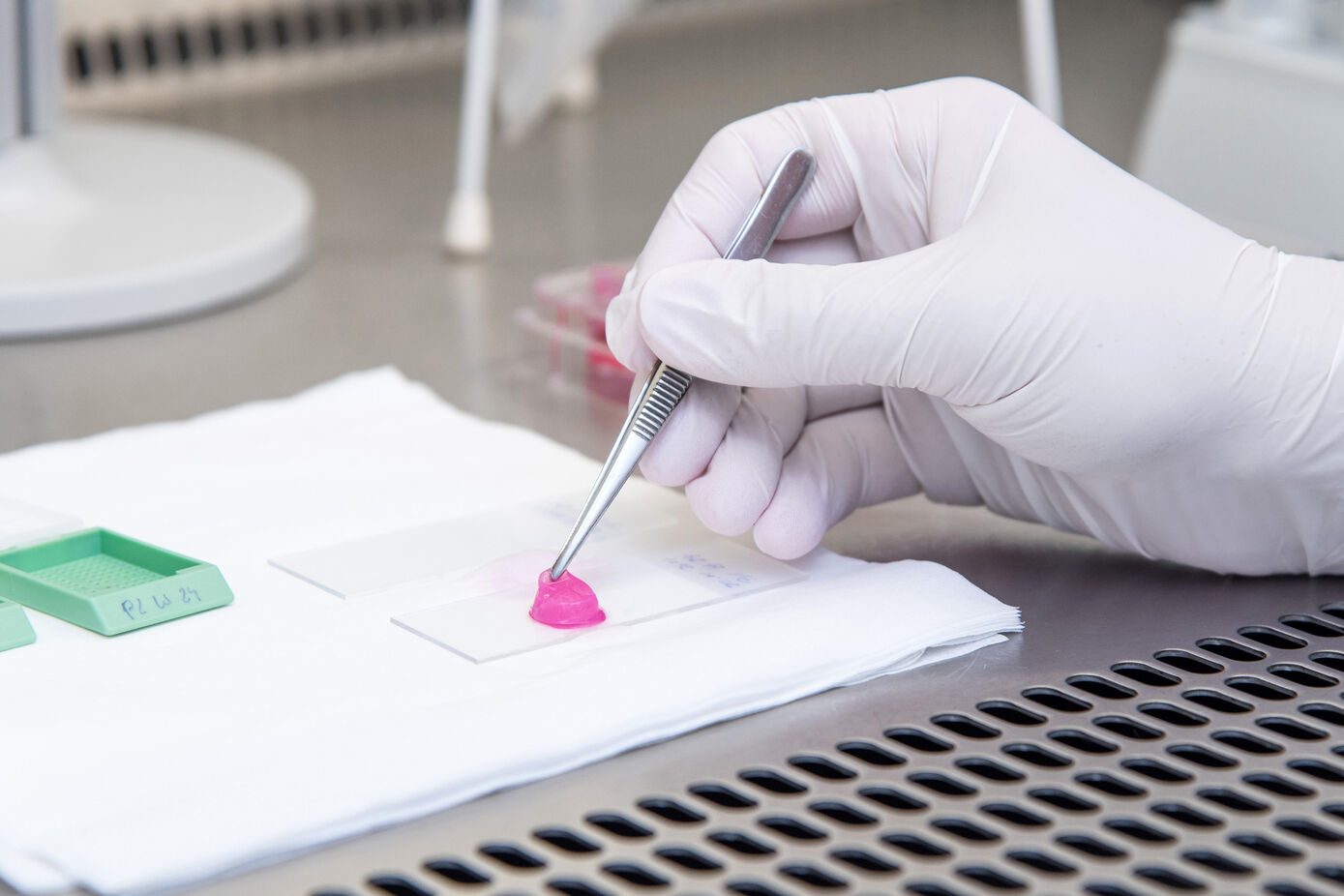
Drugs, cosmetics, chemicals, animal feed, genetically modified food, pesticides – the list of things tested in the so-called “animal model” is long. In practice, for animals ranging from the familiar lab rat to dogs and monkeys, this means a life spent in a cage and more or less a life of suffering. More and more projects, however, are now dedicated to the goal of increasingly reducing these animal experiments. This is also the case at Jena University Hospital (UKJ), Germany, where researchers are developing 3D skin infection models as an alternative to animal testing that can be used to test the effectiveness of antimicrobial wound healing products.
“Our skin model even forms burn blisters!” enthuses PD Dr. Cornelia Wiegand. In the dermatological research laboratory of the Clinic for Skin Diseases at the UKJ, she is developing a three-dimensional model of human skin that fully replicates the epidermis and dermis as well as showing central functions of the organ. At the end of the cooperation project “InVitroWund,” on which the UKJ is working together with Dr. Brill + Partner GmbH in Hamburg, a skin infection model is to be created from this artificial skin. It will enable antimicrobial wound healing products to be tested in a standardized manner without the involvement of animal experiments. The project is funded by the German Federal Ministry of Economics and Technology.
Animal testing not just ethically questionable
While small wounds usually heal on their own thanks to our body’s self-healing powers, help is needed for larger injuries or for chronic wounds that can develop as a result of venous insufficiency and diabetes, for example, or as pressure ulcers. In addition, local infections caused by bacteria make wound healing even more difficult. But even the healing of “normal” injuries is often made more difficult by wound infections and takes longer.
In these cases, wound irrigation solutions or dressings with antimicrobial components are used that are constantly being further developed. In the prescribed, standardized suspension tests to demonstrate efficacy, the new preparations act on test bacteria in various solutions. But “this is not done at clinically relevant concentrations and naturally has little to do with a realistic wound situation,” explains Cornelia Wiegand.
This “realistic wound situation” and the efficacy of wound-healing products are therefore being investigated in a second test step in animal experiments with pigs or mice. To do this, the test animals must be given injuries that overtax the animals’ self-healing powers, but which must at the same time not be too severe. This is not only ethically questionable but also encounters problems in practice. The animals lick off the ointments or nibble on the wound dressings, which in turn necessitates more tests and further complicates the reliability of the statements.
“After all, this doesn’t hurt the skin model”
This is why the researchers in Jena and Hamburg seek to “establish a meaningful alternative to animal testing” with a skin model made of fibroblasts and keratinocytes. This grows on a collagen scaffold and can regenerate in a nutrient solution for about a month. The cells react to contact or injury by releasing immune-relevant signal substances, just like the original model. Burn blisters even form when exposed to high heat. “At present, we are establishing standardized burns and cuts; after all, that doesn’t hurt the skin model,” says Cornelia Wiegand. Subsequently, infection tests “with defined quantities of typical wound germs such as staphylococci or pseudomonads” will be carried out. The aim of the research is to ultimately create “an environment in the artificial skin that is as similar as possible to a real wound.”
The model will then be tested in practice with various commercially available wound healing products in the partner laboratory of Dr. Brill GmbH. In addition, the testing procedure will be optimized in Hamburg. “The procedure should not only be able to evaluate the antimicrobial efficacy of wound-healing products in a standardized manner, but also record their influence on the wound-healing process,” says Wiegand. “In this way, we want to establish an effective and highly practicable alternative to animal testing.”
Cover photo: As an alternative to animal testing, a research team at the University Hospital Jena, Germany, is developing 3D skin infection models to test the efficacy of antimicrobial wound healing products. Photo: Heiko Hellmann/UKJ
Also of interest:
3D printing and simulations to replace animal testing
Paradigm shift in the use of animal experiments: Fewer animals, more reliable results
3D printing cuts down on animal testing and fosters research
Research using 3D cell cultures instead of animal experiments
Skin On A Chip – Research without animal experiments

